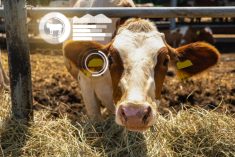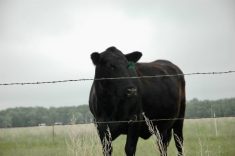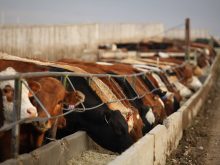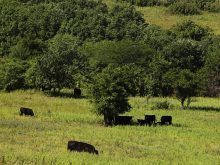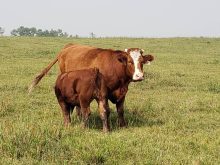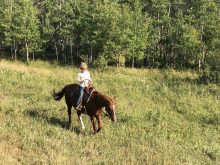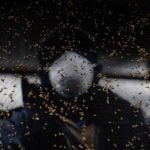I am going to take a month off from my regular routine. Rather than discuss the latest in Canadian beef nutrition, I am going to examine a new beef experience, almost 10,000 km west of Winnipeg, at the outskirts of Naju City in South Korea.
In short order, my girlfriend and I took a two-week vacation to South Korea and had a once in a lifetime opportunity to visit a typical Korean beef finisher operation.
Before I get started on our visit, let me put in perspective some important numbers comparing South Korea to Manitoba and Canada. The population of South Korea is 52 million people living in one-third of a total land mass of about 100,000 square kilometres (two-thirds is mountains), compared to 1.4 million Manitobans living within 650,000 sq. km (including 100,000 lakes).
Read Also

Gentle treatments for pain in the neck
Heading toward year-end, people unknowingly tense up against the cold and busyness, causing neck pain that can often be treated with appropriate support and gentle mobility, athletic therapist Kathlyn Hossack says.
South Korean agriculture encompasses about 3.25 million acres, while Manitoba tills about 17 million acres, both for a variety of crops. For example, half of the arable land in South Korea is set aside for rice; the rest seems to be pear farms, which produce 185,000 tonnes per year of Asian pears.
On the livestock side, Canada slaughters about two million cattle per annum, while Koreans slaughter nearly 900,000 Hanwoo beef steers, which originate in this country.
READ MORE: Canada struggles in Korean beef market
With such information, we are now ready for our visit to a traditional Hanwoo beef finishing operation located right outside Naju City (population 120,000) in the country’s southwest.
It so happens the owners are my girlfriend’s uncle and aunt: Sang June Kim and his wife, Hee Jong. They bring in about 170 Hanwoo-steer calves at about eight to nine months of age and 300-350 kg. The calves are raised and marketed at 1,000 kg at 24 months of age. No hormonal implants are used on this operation.
All animals are housed in pens with an open-roof barn, which reminds me of a U.S. dairy barn. There are three or four steers per pen with plenty of living and bunk space. No straw bedding is provided.
Feeding is once a day at 3:30 p.m., sharp. Sang June first blows the bunks absolutely clean of residual feed with a leaf blower. He then cuts and loads plastic-wrapped bales (each 500-600 kg) of complete diet (forage plus concentrate) in a small TMR mixer, mounted on a small truck. I calculate that he feeds seven to eight bales per afternoon.
With the same truck, Sang June can unload the feed along the feed bunk in a very precise manner. Subsequently, I took up a handful of diet — a grower-type diet, containing about 50 per cent rice straw and 50 per cent concentrate. The concentrate portion was rolled corn, rolled soybeans and ground barley.
I also understand from Sang June that the rice-forage portion is locally purchased from a feed mill, which combines it with grains, proteins and a mineral-vitamin pack imported from Australia. Though I didn’t confirm it, I would assume these cattle are fed a higher concentrate ration as they move into the latter finishing stages of growth to market.

Consequently, I calculate their overall growing-finishing average daily gains (ADG) to about 1.5 kg (3.2 lbs.) per head per day. Comparably, our Canadian finishers are slaughtered at about 650–700 kg at about 18 months of age, yielding comparable ADGs.
Hanwoo carcass yields are also similar to those recorded in Canada, which are about 60-63 per cent. Hanwoo cattle, though, are raised to unaccustomed hefty weights and their inherent breed meat quality differs substantially from our typical Angus- or Hereford- terminal cross.
For example, a Hanwoo ribeye contains about 40-50 per cent fat compared to a Canadian cut of marbled 20-25 per cent fat. It just so happened that I took a snapshot of a few Hanwoo meat slices sold at the local Korean store in Nagu City. It sold for about C$16 per 100 grams!
In the end, this excellent tour in itself was totally unexpected. That’s because I didn’t know my girlfriend had an uncle and aunt who raised beef in the first place. Plus, it taught me that high-quality beef is raised in other countries with both different and familiar feedstuffs. And saving the best for last: I want to thank Sang June and Hee Jong for their great hospitality in welcoming us to their farm and home.




